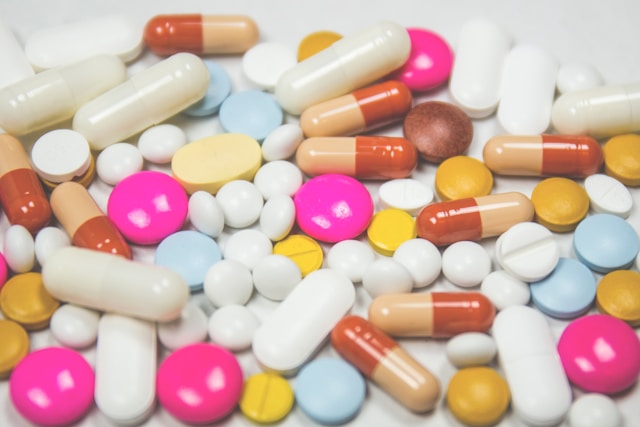Opioid use has become a pressing public health concern, with millions of individuals worldwide grappling with addiction and its devastating consequences. Whether stemming from prescription painkillers, illicit drugs like heroin, or synthetic opioids such as fentanyl, opioid addiction can have profound physical, psychological, and social ramifications. Addressing this intricate issue requires a multifaceted approach encompassing prevention, treatment, and support services. This article explores helpful guidelines for treating opioid use, empowering individuals and communities to overcome this epidemic and reclaim their health and wellbeing.
Recognize The Signs Of Opioid Misuse
The first step in treating opioid use is to recognize the signs of misuse. These may include:
- Persistent use of opioids despite harmful consequences
- Increased tolerance, requiring greater doses to achieve the desired effect
- Withdrawal symptoms when trying to stop opioid use
- Neglect of personal responsibilities and relationships
- Doctor shopping or obtaining opioids from multiple sources
- Changes in behavior, mood swings, and secrecy surrounding drug use
Educating healthcare providers, families, and communities about these warning signs is necessary for early detection and intervention. According to the seasoned treatment providers behind matclinics, a reputable provider of medication-assisted treatment for opioid addiction, it is crucial to be vigilant and proactive in identifying the signs of opioid misuse. By raising awareness and educating healthcare providers, families, and communities about the warning signs of opioid misuse, we can facilitate early detection and intervention, ultimately saving lives and preventing the progression of addiction.
Screening And Assessment
Healthcare professionals have a crucial role in screening individuals for opioid use disorder (OUD) and conducting comprehensive assessments to know the appropriate level of care. Screening tools such as the NIDA Quick Screen and the Opioid Risk Tool (ORT) can help identify individuals at risk of opioid misuse or addiction. Assessments should include:
- A thorough medical history.
- Physical examination.
- Evaluation of co-occurring mental health conditions, as well as social and environmental factors contributing to opioid use.
Medication-Assisted Treatment (MAT) – Medication-assisted treatment (MAT) is widely recognized as a cornerstone of opioid addiction treatment. MAT combines FDA-approved medications with counseling, addressing the physical and psychological aspects of addiction. These medications help reduce cravings, alleviate withdrawal symptoms, and stabilize brain chemistry, enabling individuals to focus on recovery and rebuild their lives.
Individualized Treatment Plans – Effective treatment for opioid use disorder should be tailored to the individual’s unique needs, preferences, and circumstances. A one-size-fits-all approach will unlikely succeed, given the diverse nature of addiction and its underlying causes. Treatment plans should be comprehensive, addressing not only substance use but also co-occurring mental health disorders and chronic pain management, as well as social determinants of health. Collaborative care models involving healthcare providers, addiction specialists, therapists, and peer support services can help coordinate holistic treatment approaches that address the complex needs of individuals with OUD.
Psychosocial Interventions
In addition to medication, psychosocial interventions are essential components of opioid addiction treatment. Cognitive-behavioral therapy (CBT), contingency management, motivational interviewing, and family therapy are among the evidence-based approaches used to address the different aspects of addiction. These therapies aid individuals in developing coping skills, identifying triggers for drug use, and making positive lifestyle changes that support long-term recovery.

Peer Support And Mutual Aid Groups
Peer support and mutual aid groups play a valuable role in the recovery process, offering individuals the opportunity to connect with others who have shared experiences and understand the challenges of addiction firsthand. Groups such as Narcotics Anonymous (NA), SMART Recovery, and Moderation Management provide a supportive environment where individuals can share their struggles, receive encouragement, and learn from each other’s successes and setbacks. Peer support can often be a source of strength, hope, and inspiration for those on the path to recovery.
Holistic Approaches To Wellness
Treating opioid addiction requires a holistic approach addressing the physical, emotional, and spiritual dimensions of health and well-being. Holistic therapies such as yoga, mindfulness meditation, acupuncture, and art therapy can complement traditional addiction treatment modalities by promoting relaxation, stress reduction, and self-awareness. These practices help people reconnect with their bodies, manage cravings, as well as cultivate a sense of inner peace and resilience.
Continuum Of Care And Aftercare Support
Recovery from opioid addiction is a lifelong journey that requires ongoing support and monitoring. A continuum-of-care approach ensures that individuals receive the appropriate level of support, from detoxification and stabilization to maintenance and relapse prevention. Aftercare services, including sober living homes, outpatient counseling, peer mentoring, and alumni programs help individuals transition back to their communities and maintain their sobriety over the long term.
Treating opioid use disorder requires a comprehensive and compassionate approach that addresses the physical, psychological, and social aspects of addiction. By recognizing the signs of opioid misuse, screening individuals for OUD, and providing evidence-based treatments such as medication-assisted treatment and psychosocial interventions, we can help individuals overcome addiction and rebuild their lives. Peer support, holistic wellness practices, and aftercare support services play integral roles in supporting long-term recovery and preventing relapse. By implementing these guidelines and embracing a collaborative approach to addiction treatment, we can effectively combat the opioid epidemic and promote health and healing in our communities.
